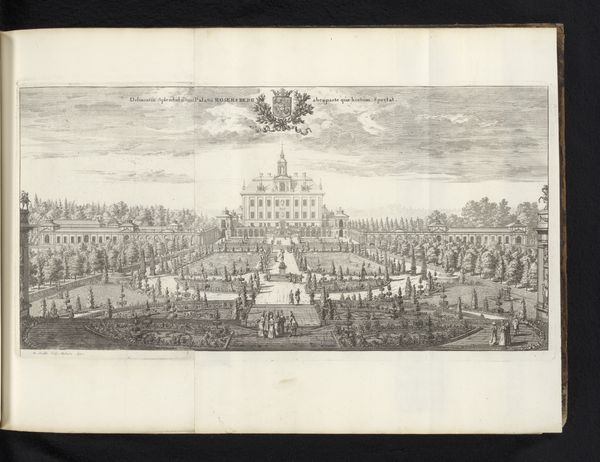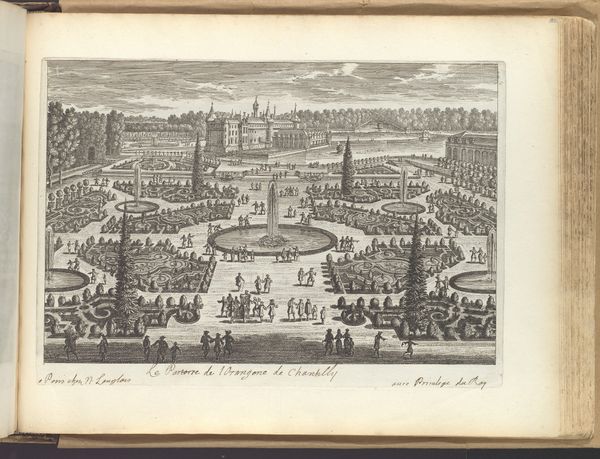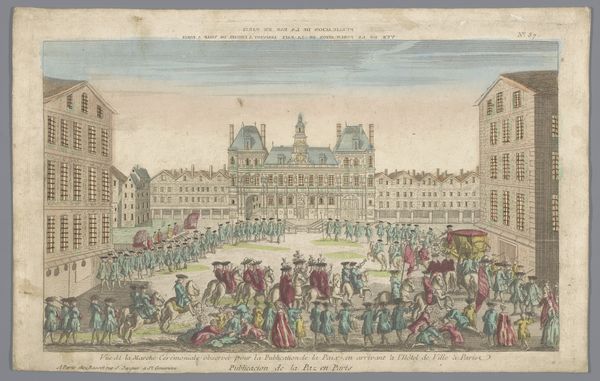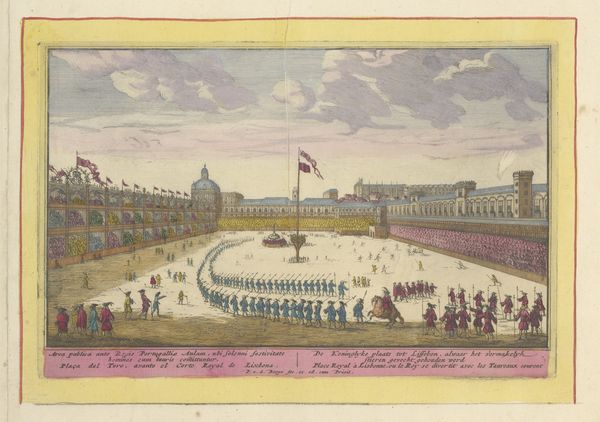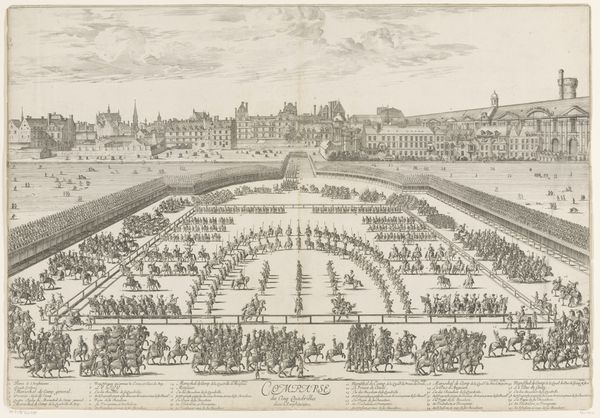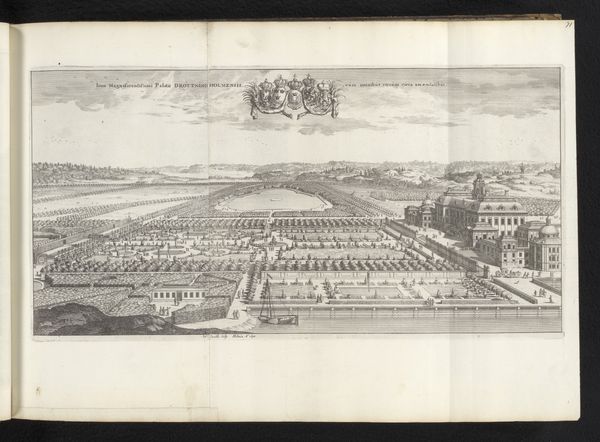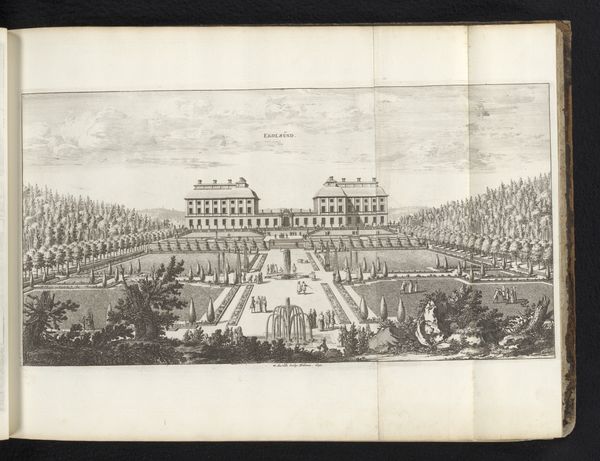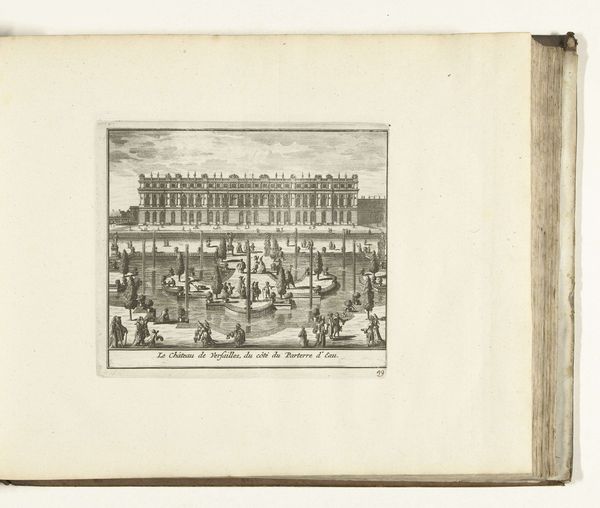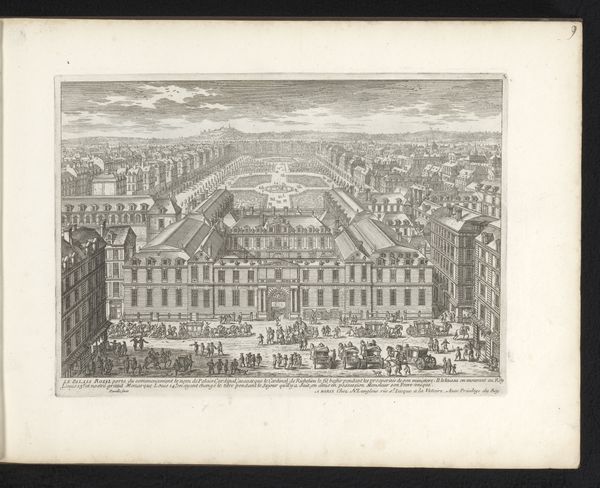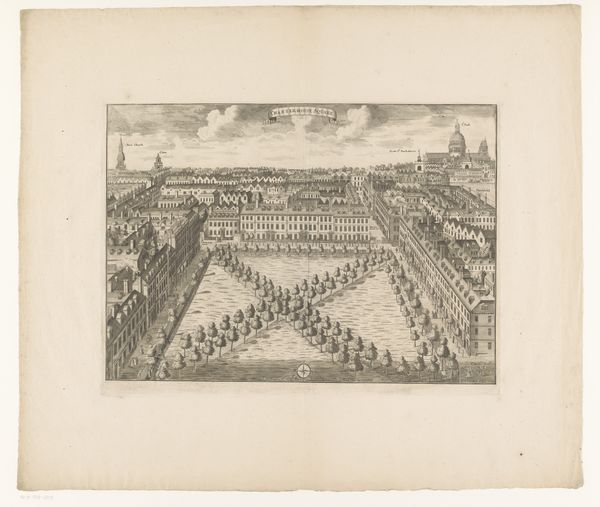
drawing, print, etching, paper
#
drawing
#
baroque
# print
#
etching
#
landscape
#
paper
#
cityscape
Dimensions: height 388 mm, width 940 mm, height 535 mm, width 1000 mm
Copyright: Rijks Museum: Open Domain
Editor: So, this is "Gezicht op het Palais des Tuileries vanaf de tuin," or "View of the Tuileries Palace from the Garden," an etching from 1686 held in the Rijksmuseum. The level of detail is striking! I'm curious, how do you even begin to interpret such a visually complex cityscape? Curator: We begin with line, the fundamental element of the etching process. Note how the crisp, clean lines define the architectural volumes and the bustling figures in the courtyard. Consider how these lines create a sense of depth and order, especially when juxtaposed with the slightly blurred, pastel-toned washes that suggests atmospheric perspective in the sky. Editor: The lines certainly are deliberate, creating a sense of grand scale. But why the inclusion of architectural plans at the bottom? Curator: Those diagrams underscore the print’s intention. This is not just a pretty view, but a calculated representation of power and order. Look at the correspondence between the detailed façade and the structural skeleton beneath. The print meticulously lays bare the visual logic, a symbolic mirroring of absolutist power aiming for both control and transparency. The regularity of the facade is mirrored in the plans below. Editor: I see now, it is not just about showing the building, but also about presenting a system and demonstrating the inherent organization and calculated nature. Thank you, I see the interplay of order and depth in a whole new light! Curator: Indeed! Paying attention to composition and materiality gives us fresh perspective. This piece allows us a valuable lens to observe 17th century ideologies, seeing not just a palace, but its underlying grammar.
Comments
No comments
Be the first to comment and join the conversation on the ultimate creative platform.

